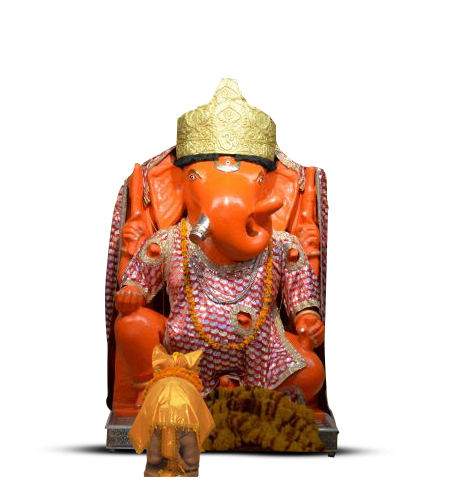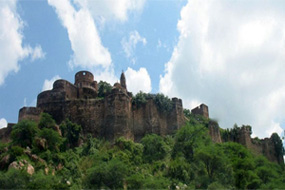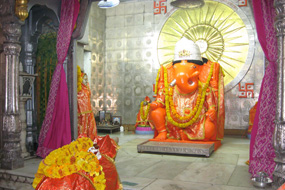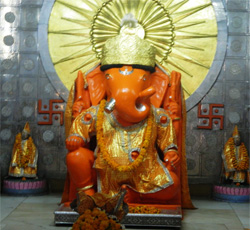



A small hill located in the heart of Jaipur. Moti means Pearl and Dungri means small hill and therefore the name Moti Dungri symbolizes a pearl hill which is truly depicted by its look of a Drop of Pearl. Moti Dungri hilltop is a true representation of Scottish Castle. The palace in past was residential premises of Sawai Man Singh II (last ruler of Jaipur). Later it became the residence of Rajmata Gaytri Devi and her son Jagat Singh (youngest son of ruler). This palace is now private property of this royal family and restricts public entrance except the Lord Ganesha temple which is highlight of this area. Both palace and temple are true architectural masterpieces.
Moti Dungri is widely acclaimed for the architectural and spiritual point of view. Spanned over an area of nearly 2 kilometres Ganesha Temple in Moti Dungri is known for its pattern work on marbles that are engraved with legendary descriptions. This temple is perfect combination of Indian, Islamic as well as western representations which are characterized by its three domes. Being dedicated to Lord Ganesha, this temple is prominent for its scenic location and pictorial view that it lends to the visitors. People from almost every corner of the world visit here to dedicate their respect and offering to Lord Ganesha.

According to legends, King of Mawali (Mewar) while returning from a long journey to his palace wished to establish a temple at the first halting point of his bullock cart that was carrying the huge idol of Lord Ganesha. His cart became resistive and stopped at the foot of the Moti Dungri hills which lead to setting up of Ganesha temple at this place.
The responsibility of commissioning the entire construction and designing task was handed over to Seth Jai Ram Paliwal. It was under the supervision of Seth Paliwal and Chief Priest Mahant Shiv Narain Ji that the creation of this glorious structure was carried out with utmost level of meticulousness. Completed in approximately 4 months, this temple homes Ganesha idol where only Lord Shiva followers (Shaiva) were allowed to pay their visit. Shaivism constitutes to be one of the oldest of four sects of Hinduism and comprises of followers of Lord Shiva. But today it is known be popular religious cum tourist destination. Thousands of disciples searching for eternal delight assemble at this temple to worship God of auspiciousness i.e. Lord Ganesha.

Vermillion in colour the idol of Lord Ganesha’s is in sitting position. On the basis of Hinduism belief that Ganesha rides on rat, a big idol of rat made of marble is also placed in front of Lord Ganesha’s idol. Vermilion (Sindoor) paste also referred as “Chola” is applied on the idol on timely basis. On special occasions and festivals, ritual purification (ablution) of Lord Ganesha is done with milk.
Taking into consideration Lord Ganesha as the God of wealth, wisdom, prosperity, knowledge and auspiciousness, people from diverse religions pay their visit to this the temple to seek out blessing. Large number of devotees including the recently married couples and owners of brand new vehicles come to worship Ganesha. Lord Ganesha is Lord of Mercury therefore Wednesday is deemed to be celebrated as Ganesha’s day. In this respect a fair is organized every Wednesday at this temple.